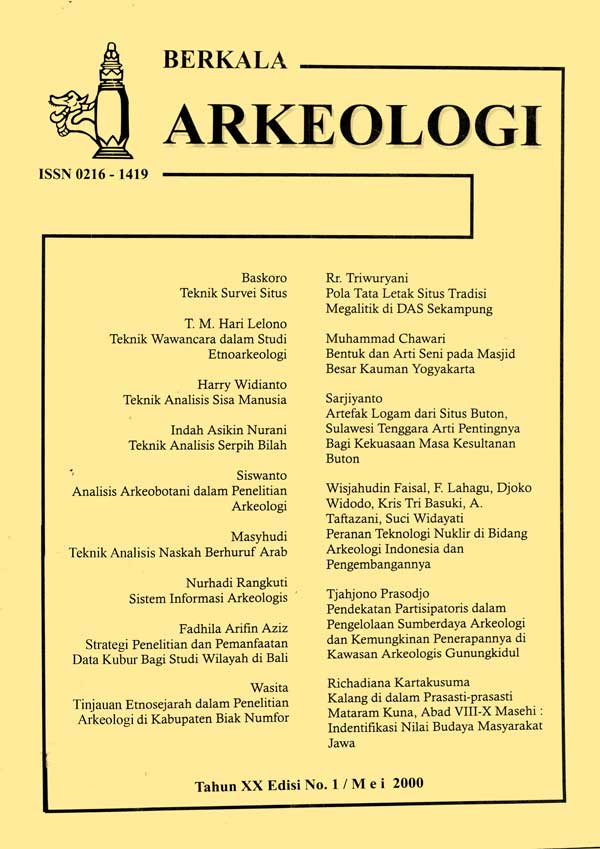ANALISIS ARKEOBOTANI DALAM PENELITIAN ARKEOLOGI
Main Article Content
Abstract
Flora residue in any form for archaeological studies will generally be directly related to past humans, namely regarding food sources, plant cultivation or agricultural culture, and technology. The rest is related to past environmental and vegetation problems (archaeo-ecology), dating interests, climatology, and others. Experts have developed many techniques and methods for handling the findings of flora residue. However, the Puslit Arkenas has not been fully utilized, this is in addition to limited human resources as well as its supporting tools. Efforts to overcome deficiencies can be done through cooperation with external parties.
Article Details

This work is licensed under a Creative Commons Attribution-NonCommercial-ShareAlike 4.0 International License.
References
Dimbleby, Geoffrey. 1978. Plant and Archaeology. Paladin Granada Publishing, London, Toronto, Sidney, New York.
Dumanau, J.F. 1990, Mengenal Kayu. Kanisius. Yogyakarta.
Evans, John G. 1978, Environmental Archaeology. Paul Elek. London.
Lawrence, George H.M. I 968. Taxonomy of Vascular Plants. The Macmillan Company, New York. Collier-Macmillan Canada, Ltd., Toronto, Ontario.
Polunin, Nicholas, 1990. Geografi Tumbuhan (Terjemahan oleh: Gembong Tjitrosupomo, Editor: Wibisono Soerodikoesoemo). Gadjah Mada University Press. Yogyakarta
Renfrew, Colin & Bahn, Paul. 1991. Archaeology - Theories, Methods and Practice. Thames and Hudson Ltd. USA.
Schiffer, M,B. (Editor). 1983. Arhaeological Method and Theory. Academic Press, New York, London.
Scott, Richard A. and Tschudy, Robert H. 1969. Aspects of Palynology – An Introduction to Plant Microfossils in Time. Wiley-Interscience. A Division of John Wiley & Sons. New York. London. Sydney. Toronto.
Shackley, M. 1981. Environmental Archaeology. George Allen & Unwin, London, Boston, Sydney.

